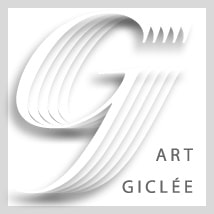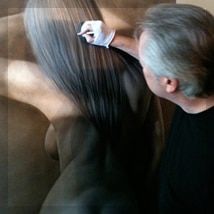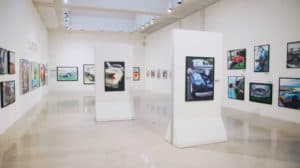What are Art Giclee Prints, really?
Art Giclée (pronounced “zhee-clay”) prints have been around the art scene for quite a while now. They first made their appearance in the early 1990s as a process to reproduce fine art. They are a beautiful by-product of the computer era. With Giclée printing, no screen or other mechanical devices are used, and therefore, there is no visible dot screen pattern, as you would see in traditional color printing (lithography). Giclée prints are created with specially formulated archival inks that provide greater longevity than those used in lithography or silkscreen prints. Quality Giclées are produced on large and often expensive multi-color printers, so the image has all the tonalities and hues of the original painting. But unlike other print processes, Giclées has the beautiful advantage of producing vibrant colors and accurate reproductions in various sizes and on various surfaces on an as-needed basis.
To create the best Giclée prints possible, the printer needs a large digital file created from the original art. When properly created, finished Giclée fine art prints are valuable fine art collectibles created to last a lifetime.
Under normal lighting conditions, inks will not show noticeable fading for at least 200 years. However, it is not recommended by ink and media manufacturers that prints be exposed to direct sunlight, especially for long periods of time. If you handle your Giclée just as you would with an original – with care and caution – then it may last even longer than the original.
Typically, a Certificate of Authenticity is supplied with each sold Giclée print that provides information about Copyright ownership, print title, size, media, number in the limited edition, edition size, etc. The certificate gives the collector assurance of museum quality standards and fine art value.
• • • • •
ABOUT GICLÉE PRINTING
The Definition: Giclée (zhee-
Giclée (zhee-
The Term: The term “Giclee print” connotes an elevation in printmaking technology. Images are generated from high-resolution digital scans and printed with archival quality inks onto various substrates, including canvas, fine art, and photo-
The Process: Giclée prints are created typically using professional 8-colour to 12-colour ink-
The Advantages: Giclée prints are advantageous to artists who do not find it feasible to mass produce their work but want to reproduce their art as needed or on-demand. Once an image is digitally archived, additional reproductions can be made with minimal effort and reasonable cost. The prohibitive up-front cost of mass production for an edition is eliminated. Archived files will not deteriorate in quality as negatives and film inherently do. Another tremendous advantage of Giclee printing is that digital images can be reproduced to almost any size and onto various media, allowing the artist to customize prints for a specific client.
Disadvantages: The accessibility of Giclée printing and the proliferation of Giclée prints has led to a certain amount of confusion amongst the public and suspicion from traditional artists, galleries, and the art establishment.
The Quality: The quality of the Giclée print rivals traditional silver-
• • • • •
Learn more about Giclée here…
• • • • •
ART NUDES | ARTWORKS FOR SALE | MOTORCYCLE ARTWORKS
- About the Author
- Latest Posts
- More info
A.D. is an artist who started drawing at a young age. Throughout his life, he has worked with different creative tools in traditional and digital art and design. His art and writings have been showcased in various publications such as Airbrush Action Magazine, Airbrush Magazine, American Art Collector, Art & Beyond, Dream To Launch, Easyriders, Las Vegas City Life, Las Vegas Weekly, L’Vegue, ModelsMania, Quick Throttle, and The Ultimate Airbrush Handbook.





